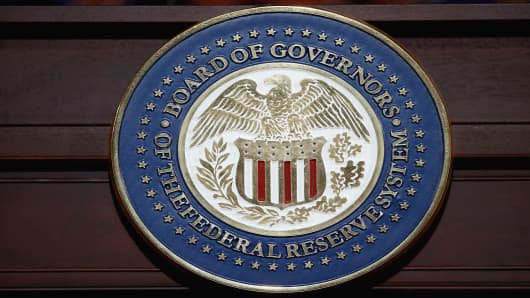Markets might be getting ahead of themselves in anticipating some bold new moves from the Federal Reserve to combat the weakening economy.
Whether the Fed will embark on a new round of quantitative easing, or money printing, is the central market debate of the moment, but there are reasons for low expectations for any announcement by the Fed after its meeting next week.
If you sliced, diced and otherwise parsed the economic speech of Fed Chairman Ben Bernankeon Monday, you might have come to the conclusion that his outlook was a bit more somber. But that conclusion is debatable. The Fed chairman, unlike his predecessor Alan Greenspan, is not one to be subtle about changes in his outlook for the economy or policy. If Bernanke changes his mind, he feels the better outcome for monetary policy emanates from direct and transparent communication.
He seemed pretty balanced in his outlook: sticking to his forecast that the recovery would continue, but cautioning against any quick tightening of either fiscal or monetary policy.
More to the point, completely absent from his speech was any mention of additional measures the Fed should take in the face a slowing economy. Again, if the Fed chairman wanted to signal to markets that the Fed would embark on a new policy, he simply had to put a line or two in his speech. He knows we’re all watching, slicing and dicing. Markets would have picked it up.
New easing measures will be on the table next week, but the next steps the Fed takes are likely to be limited. The Fed owns some $1 trillion of mortgage-backed securities, the product of an aggressive buying program begun last year to expand its balance sheet and pump money into the financial system amid the Great Recession. The Fed stopped buying those mortgages in March.
The Fed will now consider whether to take the money from maturing mortgage securities and roll them back into new securities or Treasurys. That means the Fed would keep the size of its balance sheet, $2.3 trillion, the same. The mortgages are estimated to roll off at a rate of $200 billion annually, and deciding not to reinvest the money would be an effective tightening of monetary conditions.
But it’s probably a stretch to conclude this represents anything bigger than just that. The temptation to jump from a decision to maintain the balance sheet’s size at current levels to a new round of easing is understandable but probably premature.
First, the Fed hasn’t yet concluded as a group that the economy is really turning down seriously. Second, the Fed hasn’t decided whether the MBS proceeds should be reinvested in Treasurys or MBS.
The concern among some members is that investing in Treasurys would be seen as the Fed monetizing the Treasury’s debt. The counter argument is that investing in MBS shows a preference by the central bank for one credit market over another, and puts the Fed squarely in the middle of picking private sector winners and losers.
Third, there's a robust internal debate about what good the easing did and what good additional measures would do.
What’s happening now is the Fed is in a bit of a holding pattern. It wants to see more data, breath the fresh air from its retreat in Jackson Hole and figure out its next steps.
St. Louis Fed President Jim Bullard has outlined a bold new step: shifting the emphasis from interest rates to the size of the Fed’s balance sheet. He wants the Fed to consider the size at each meeting and adjust it according to recent data.
But it’s unclear how many supporters he has on the Fed for his views. Reading the minutes of the Fed’s June meetings, it’s striking how much talk there was about selling assets and shrinking the balance sheet, so called exit strategies.
Many hawkish members of the Fed are wary of going the other way, either because they want the Fed to do less because they fear inflation or because they are more optimistic on the economy.
Now reentry is on the table, and the best guess is that the Fed does so haltingly, if at all. A first step could come next week with a promise to reinvest the proceeds of the MBS portfolio if the economy weakens. Future steps will require a more serious downgrade by the Fed in its outlook.



